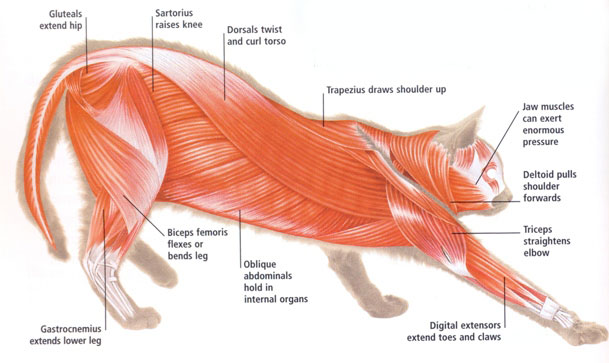-
Heart diseases
Heart disease in cats is relatively common. One of the most challenging aspects of feline heart disease is that cats may not show any warning signs (such as exercise intolerance, coughing, weakness) until the process is very advanced. Untreated heart disease can lead to congestive heart failure and death. The most common heart disease in cats is cardiomyopathy, […]
-
Cytauxzoon felis
Cytauxzoonosis is a serious, often fatal, tick-borne disease caused by the apicomplexan protozoal parasite Cytauxzoon felis. This disease affects domestic cats in the south central and south-eastern portions of the United States[1]. It is a genus of protozoa closely related to Theileria spp. The causative organism, Cytauxzoon felis, is classified in the Order Piroplasmida, Family Theileridae. Because of the rapid […]
-
Coccidioides spp
Coccioides immitis and, more rarely, Paracoccioides brasiliensis have been recorded as causing fungal infections in cats[1]. Cats are infrequently infected with these fungal organism, which belong to the Family Onygenales. Although only a limited number of cases have been described in cats, primarily in the Americas, it appears that the primary route of infection is by inhalation of small airborne […]
-
Feline Nutrition
It is an erroneous and simplistic statement to declare that cats live longer in the 21st century than cats in previous centuries solely because of improved nutrition. In parallel to Western-society’s slow loss of life quality in association with adopting a ‘fast-food’ mentality, the argument that cats are showing an equal decline in life quality […]
-
Salpingitis In Cats
Salpingitis, defined as inflammation of the uterine tube is often associated with endometritis or pyometra, and probably occurs more commonly than is reported as a cause of breeding problems in female cats[1]. Because it is assumed to be an ascending infection, the agents are probably the same as those causing endometritis, but studies are lacking. Anecdotal evidence of Citrobacter […]
-
Citrobacter spp
Citrobacter spp are Gram-negative enteric coliform bacteria that can cause vaginitis and salpingitis in the cat[1]. C. freundii and C diversus are enterobacteria commonly isolated from soil, water, sewage, and food as well as from different organs of diseased and healthy animals, including mammals, birds, reptiles, and amphibians in which it is considered to be an opportunistic or secondary pathogen[2]. In humans, this […]
-
Conjunctivitis
Conjunctitivis is a common eye disease of cats, defined as an inflammation of the conjunctival membranes surrounding the eye, is a very common disease in cats. There are a wide range of causes including allergies, scratches from other cats and objects, autoimmune diseases (eosinophilic granuloma complex), viral infections (FHV, FCV and rarely FIP), bacteria (Chlamydia) and other parasite infections such […]
-
Bacterial diseases in Cats
Bacterial diseases affect all animals and cats are no less immune or unique to their onslaught. They can cause varying ranges of illness in cats from mild dermatitis to sepsis and death. Appropriate antimicrobial therapy should be based on isolation and culture and sensitivity of causative bacteria. Common bacterial diseases in cats include: Actinobacillus spp – gingivitis and respiratory infections […]
-
Cleft palate
“Hair lips” and “cleft palate” are a genetic disorder common to all animals, including the cat. It is caused by failure of closure of the palatal mucoperiosteum during fetal development in utero. The deficit in the hard palate can range in severity from mild to severe. There may be loss of tissue in the hard […]
-
Cat Anatomy

General feline anatomy Anatomical abnormalities Bracyury (Short tail) Cleft palate Cryptorchidism (retained testicle) Cutaneous asthenia Flat chest syndrome (kittens) Hip dysplasia Hydrocephalus 1. calcaneus 2. carpals 3. caudal vertebrae 4. cervical vertebrae 5. clavicle 6. costal cartilage #5 7. femur 8. fibula 9. humerus 10. hyoid apparatus 11. ilium 12. ischium 13. lumbar vertebrae 14. […]